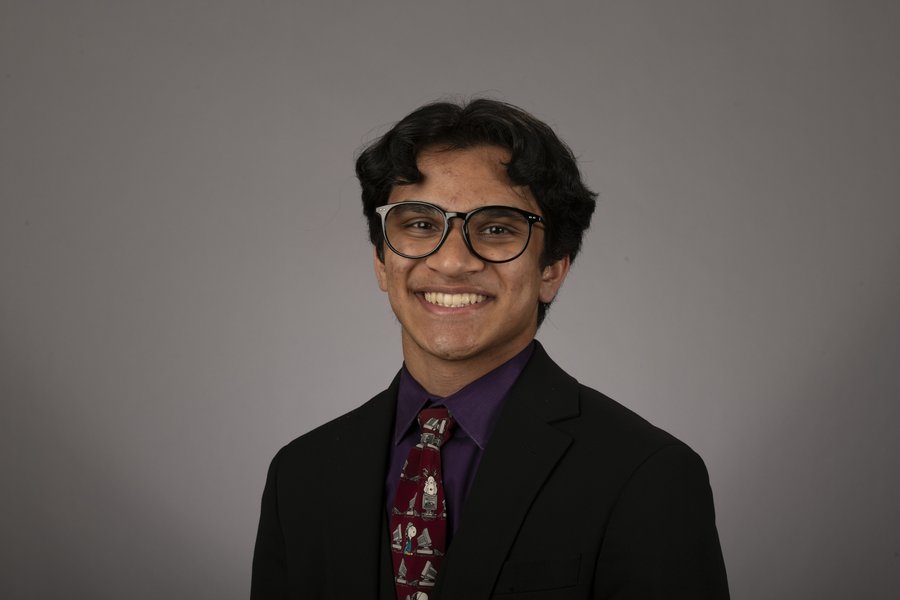Negotiations over allegedly forgotten African American cemetery continue to create controversy

December 31, 2018
Chants, songs and powerful testimonies ensued as members of the Macedonia Baptist Church and the Church’s Coalition met with The Montgomery County Housing Opportunities Commission (HOC) in a public meeting Dec. 5. Tensions grew as protestors filled the small meeting room and carried homemade signs sprawled with messages like “Black History Matters” and “Save Our Cemeteries.” The meeting was cut short after the commissioners left the room, and a security guard ushered the church members out as they sang the lyrics to “We Shall Overcome.”
The protesters were advocating for a memorial on or near the site of the Westwood Tower Apartments—which the HOC currently uses as low-income housing—and requested the HOC grant them rights to the land. The parking lot for the apartment building allegedly lies on top of the Moses African Cemetery, a historic African American burial ground. The county has yet to formally recognize the cemetery’s existence.
HOC monthly public meetings grant community members three minutes to testify to the commissioners concerning housing in Montgomery County. After several members of the Church exceeded their time limit, the commissioners grew frustrated.
When the commissioners transitioned into the second phase of the meeting—where they provide responses to testimonies they’ve heard in past meetings—the protesters continued chanting. The commissioners abruptly left the room, and the meeting came to a close.
For the past two years, the predominantly African American Macedonia Baptist Church has fought the HOC for the rights to the land so they can acknowledge the cemetery’s history and build a memorial on the site. The controversy first arose when developers made plans to construct an above ground parking lot on the site in 2015.
“I wanted to know what forces led to this community being so disrespected and so disregarded that every trace of their existence was completely erased,” said Marsha Adebayo-Coleman, leader of the Church’s Social Justice Ministry. “As a human being, I wanted to know what had happened and who made those decisions about a human community.”
Owners of the land plot shifts—1910s to the 1960s
The cemetery’s existence is supported by some historical evidence. In 1911, an African American fraternal organization based in Washington, D.C.—White’s Tabernacle—bought an acre of land in the Westbard area for an African American cemetery. White’s Tabernacle conducted burials up until the mid 1930s, local historian Dave Rotenstein said.
Although there is limited physical evidence available without an archaeological survey, Rotenstein said accounts from 1930s Bethesda residents and members of the descendant community, as well as tax records and maps, indicate that the cemetery existed. In 1958, White’s Tabernacle sold the site to a developer.
During the construction of the Westwood Tower Apartments in the 1960s, some reports recall instances in which construction workers found bodies. They followed dig and dump procedures, where they would continue building even after finding remains, according to Rotenstein.
Controversy begins—2015-early 2018
In early 2014, Equity One Developers bought the 22-acre Westbard area, and they announced plans to redevelop it in February 2015. A few months later, when the Church caught wind of the proposal, they fought back against Equity One Developers’ plans to tear down the Westwood Tower Apartments because they wanted to prevent any further destruction. After Equity One merged with Regency Centers Corporation in March 2017, Regency sold the Westwood Towers lot to the HOC.
Near the end of 2017, the Church hired Rotenstein to complete the research necessary to secure historic designation for the cemetery under Montgomery County Historic Preservation law. The Church has never asked for the apartment building to be shut down, and under historic designation the apartments would likely remain in use. However, historic designation would begin the process of the County acknowledging the alleged history of the site.
Although he stopped working with the Church in June 2018, Rotenstein completed his research and distributed copies to descendants of people buried in the cemetery, to the Montgomery County Planning Department and to the Washington D.C. Historic Preservation Office in September. He has yet to receive a response from the MCPD, but Rotenstein said a HPO archeologist thanked him for locating a D.C. cemetery that had been forgotten for over 100 years.
Rotenstein also provided a copy of his research to the HOC. While doing so, he cautioned the HOC that although the Church has been the most vocal advocate of the cemetery, they are hardly representative of the entire stakeholder population. There are many other descendants who do not belong to the Church that should be involved in deciding what to do with the land and how to memorialize it, he said.
The main reason the Church demanded the HOC to return the property back to them was because they claimed the people buried in the cemetery were members of the Macedonia Baptist Church, Rotenstein said. But Rotenstein’s research found that the cemetery was affiliated with the Rock Creek Baptist Church, not Macedonia Baptist Church. He said he hopes the Church will begin to involve a more diverse community in their advocacy.
“The descendant community extends far beyond Bethesda into Washington D.C. and into all of the Washington Metropolitan area, yet Macedonia isn’t reaching out to bring these other people in,” Rotenstein said. “They demand to be the sole spokesbody for the cemetery, when in fact there are so many other people who are legitimate stakeholders who should be at the table discussing what should happen to the property.”
Reverend Segun Adebayo of the Macedonia Baptist Church said which congregation the buried people belonged to is insignificant to the Church’s involvement in the issue. As one of the few African American institutions in the area, he said the Church became involved to uphold the history of the African American community in Bethesda. The Church also invites anyone who cares about the issue to work alongside them in their advocacy, Adebayo said.
Church and HOC continue working toward solution
Earlier this year, the Church enlisted the help of local political candidates in a public meeting with the HOC. At the meeting, the candidates and advocates from the Church demanded the HOC recognize the existence of the cemetery and grant them the rights to the land. Since then, newly-elected County Executive Marc Elrich has become involved in the dispute. In his first public appearance since winning the seat, Elrich attended a Nov. 7 meeting between the Church and HOC. Although he didn’t offer his perspective on what should be done, Elrich expressed his determination in finding a resolution that pleases both sides.
Prior to the Nov. 7 meeting, Rotenstein suggested that the HOC form an advisory board of a diverse group of stakeholders to find a way to allow the apartments to remain in use while appropriately memorializing the site.
The HOC considered this recommendation and sent a letter Nov. 2 to the Church suggesting the formation of an advisory board. The leaders of the Church were not pleased with the idea because they believe the Church’s pre-existing coalition plays the same role, Adebayo said.
“There’s no business for it,” Adebayo said. “The committee is just an effort to diminish the voice of the coalition.”
At the Dec. 5 public meeting, protestors’ testimonies to the HOC asked them to grant the Church the rights to the land and “do the right thing.”
American University student Robert Stubblefield joined the Church’s social justice ministry after hearing about the cemetery through his activism with groups like Showing Up for Racial Justice Montgomery County and Impact Silver Spring. Stubblefield’s testimony explained how cemeteries were more than just burial grounds for the African American community: in segregated communities like Bethesda, they were places the community could gather.
“As an African American man who was born and raised in this county, the whitewashing of my people’s history is insulting,” Stubblefield said before the meeting. “It’s very important that the story gets told with this memorialization because we don’t hear a lot in our schools about the role that African Americans play in helping develop and find this county.”
Chief Executive Officer of the HOC Shauna Sorrells said the HOC is open to continuing meeting with the Church and is in favor of memorialization, yet she argues memorialization is not within the bounds of their department.
“As an agency, creating memorials and parks is not our mission. Typically when you have a memorial in a community there is a process that is inclusive,” Sorrells said. “We are suggesting that a similar process should exist. We would be a participant in the process, but the Parks Department [would run it].”
In the meantime, the Church is talking with Regency about allocating plots of land adjacent to the Westwood Towers for the construction of a memorial and a museum. Adebayo said the memorial could act in the same way a cemetery does, allowing people to reflect on their lost loved ones, while the museum would tell the untold story of the black community in Bethesda.
The Church will persevere and continue their advocacy until the cemetery receives the acknowledgment it deserves, Adebayo said.
“It’s a struggle,” Adebayo said. “We didn’t think it was gonna be a walk in a park.”
An earlier version of this article incorrectly spelled Dave Rotenstein’s name. The story has been updated accordingly.







